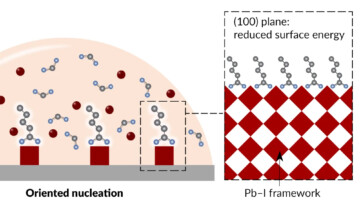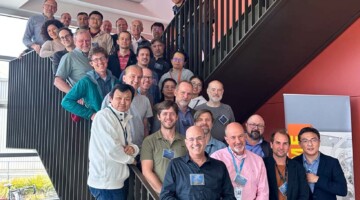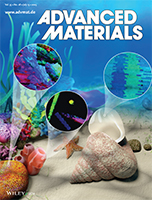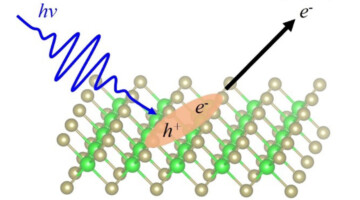Multimodal probes revealed a way to prevent the formation of undesirable phases in a perovskite-type compound that shows promise for the efficient harvesting of light for solar cells. The work led to new fabrication protocols that resulted in devices with improved power-conversion efficiencies and operational stability. Read more »![]()
![]()
All News & Updates
Beamline Optics and Modeling School (BLOMS) 2023
The ALS hosted its first Beamline Optics and Modeling School (BLOMS 2023), a three-day, hands-on workshop to teach the theory, methods, strategy, and tools used to design and model x-ray beamlines. Experts from four other light sources and one private company showed students the capabilities of modern, freely available tools for x-ray source and beamline modeling. Read more »
Breaking Barriers in Drug Delivery with Better Lipid Nanoparticles
A collaboration between Berkeley Lab and Genentech, a member of the Roche Group, is working to break through some of the drug delivery bottlenecks by designing the most effective lipid nanoparticles (LNPs)—tiny spherical pouches made of fatty molecules that encapsulate therapeutic agents until they dock with cell membranes and release their contents. Read more »
Toward High Efficiency Water Processed Organic Photovoltaics: Controlling the Nanoparticle Morphology with Surface Energies
Researchers achieve power conversion efficiencies approaching 10% by careful control of the nanoparticle and thin film morphologies thanks to surface energy considerations. This approach opens the route to low environmental footprint photovoltaics. Representing the promise of this sustainable direction in organic photovoltaics, the image shows the deposition of the active layer from water-based nanoparticles inks. Read more »
Allosteric Tuning of Caspase-7: Establishing the Nexus of Structure and Catalytic Power
How can allosteric sites be more effectively targeted by small-molecule drugs? Using an integrated in vitro/in silico experimental workflow; we discovered novel allosteric inhibitors of caspase-7 and revealed new connections between the active site and the remote allosteric site (i. e., allosteric structure–activity relationships, ASARs) for this valuable disease target. Read more »
A Molecular-Scale Understanding of Misorientation Toughening in Corals and Seashells
Researchers reveal that the toughness of polycrystalline seashells and coral skeletons is increased by small misorientation of adjacent crystals. The findings pave the way toward bioinspired materials with tunable toughness. Read more »
June 2023 Message from the UEC
UEC Chair Inna Vishik discusses the format for this year’s User Meeting, which will include tutorials, plenary and poster sessions, and workshops focused on long-term scientific visioning. She also reviews recent UEC congressional outreach and upcoming communications about ALS-U impacts. Read more »
New Videos on ALSHub Features
The ALS User Guide now offers a selection of instructional videos describing how to perform tasks in ALSHub. You can follow along to create an account, submit a proposal, schedule your beamtime, and more. Read more »
Simon Leemann, Accelerator Operations & Development Deputy
Simon Leemann’s job is to make sure the accelerator runs well—work that has taken him all over the world. Find out which languages he’s learned to speak as well as what gives him hope for the future. Read more »
Excitons Dance the Two-Step in a 2D Material
Excitonic insulators are a rare form of macroscopic quantum state that can be realized at a high temperature, which can be useful for quantum information science. At the ALS, researchers found that in a 2D material, a novel two-step “folding” behavior in the ARPES data signals the existence of an intermediate exciton gas state. Read more »
- « Previous Page
- 1
- …
- 24
- 25
- 26
- 27
- 28
- …
- 140
- Next Page »









